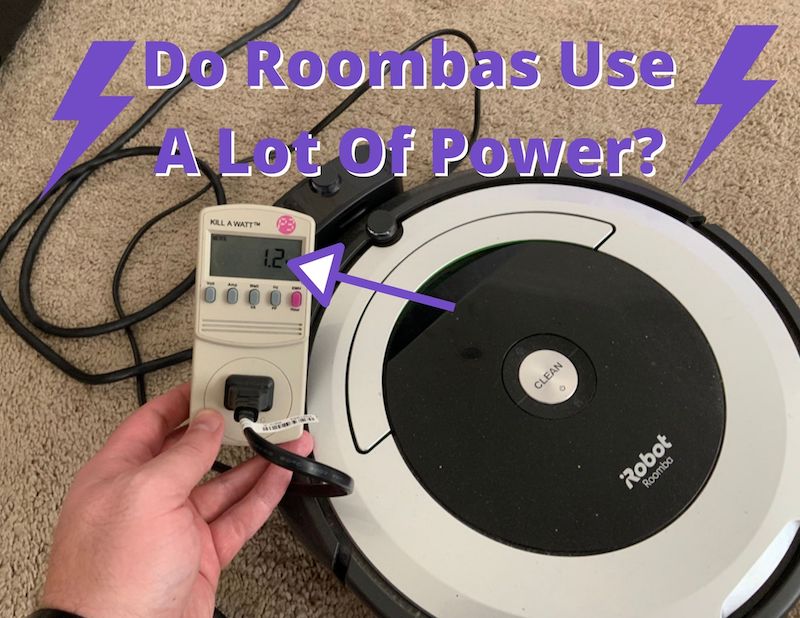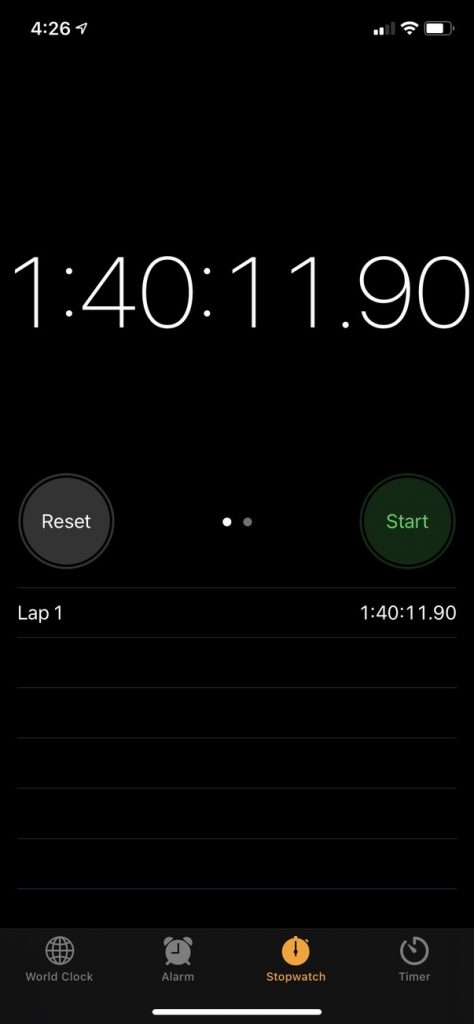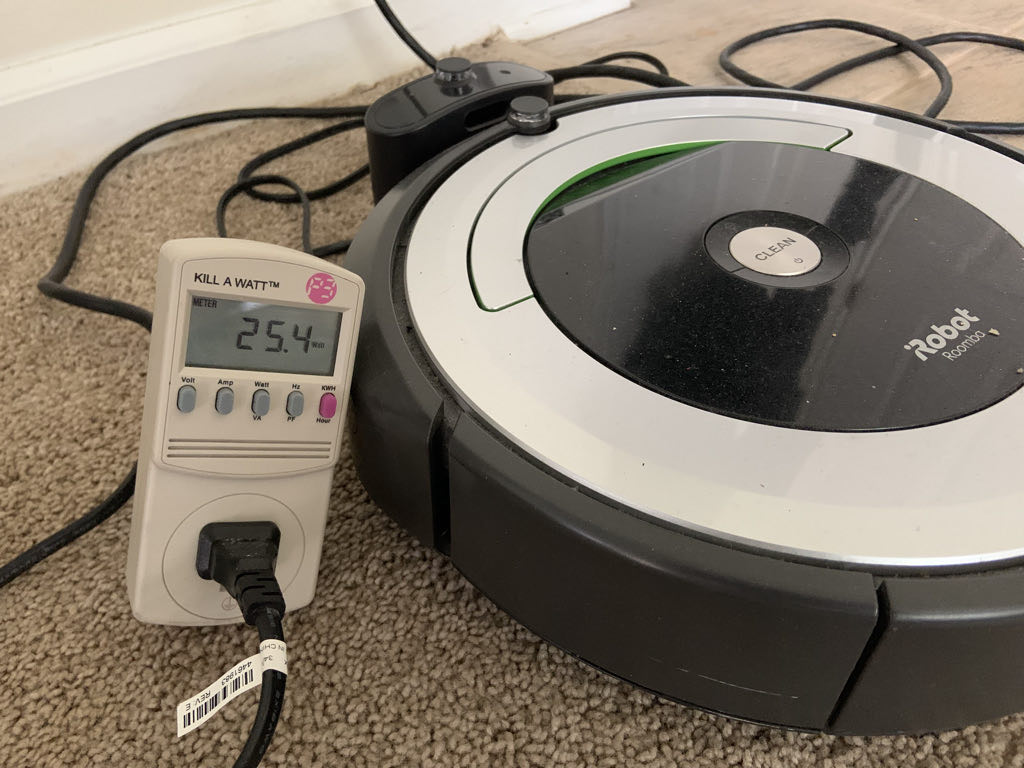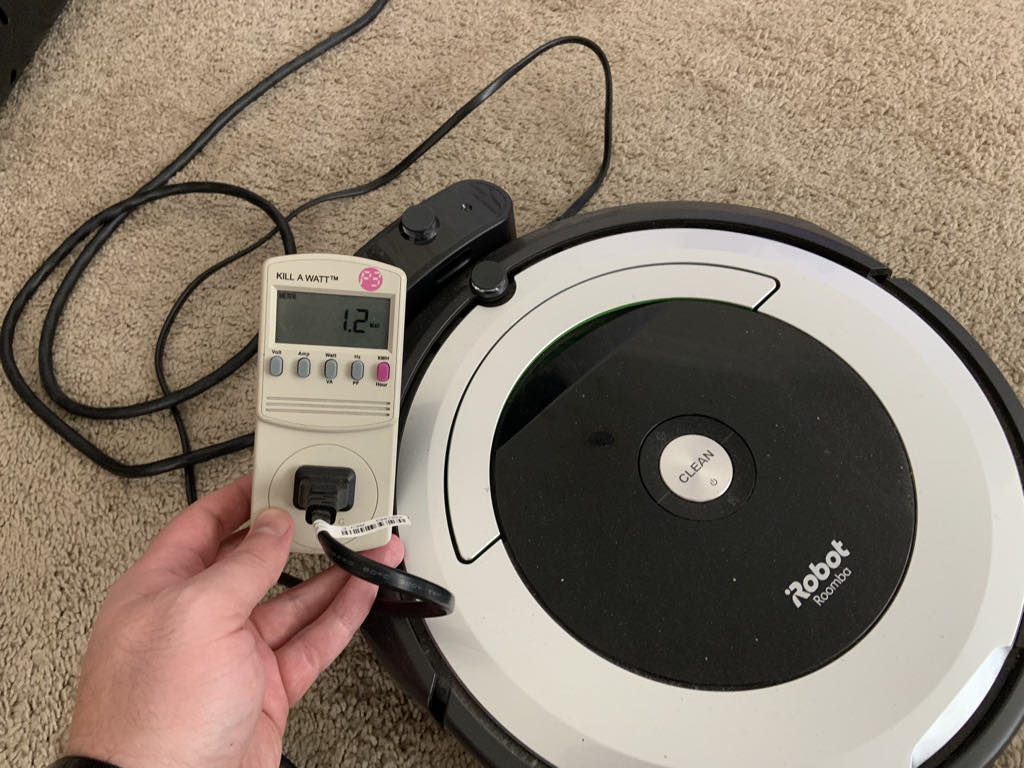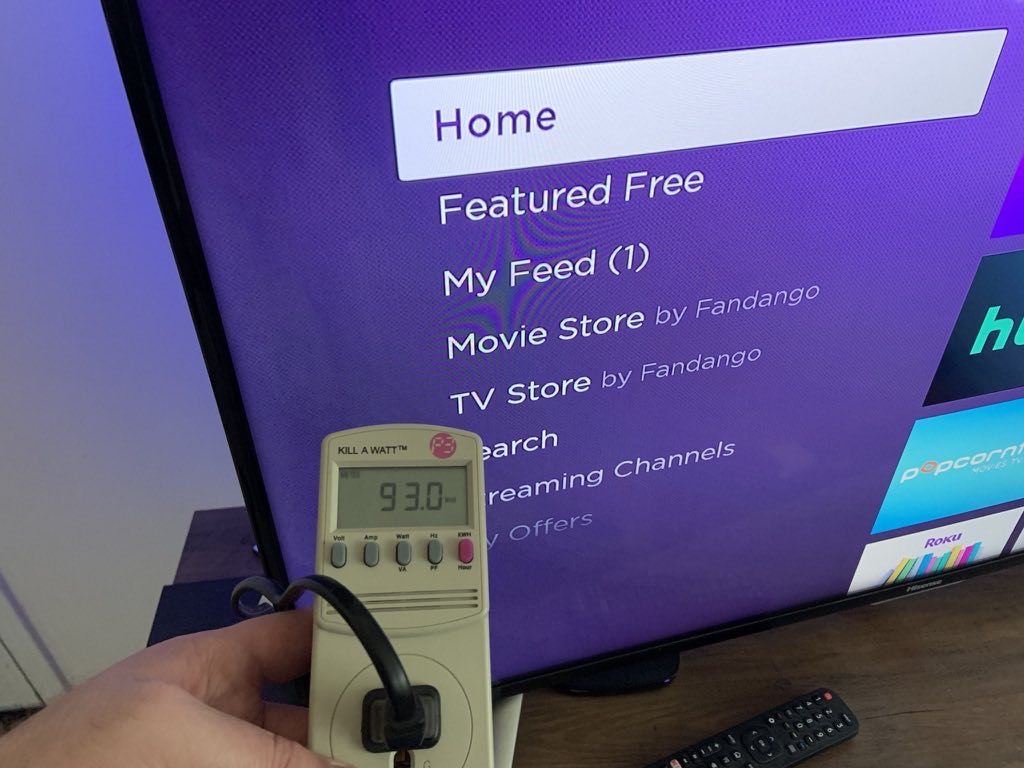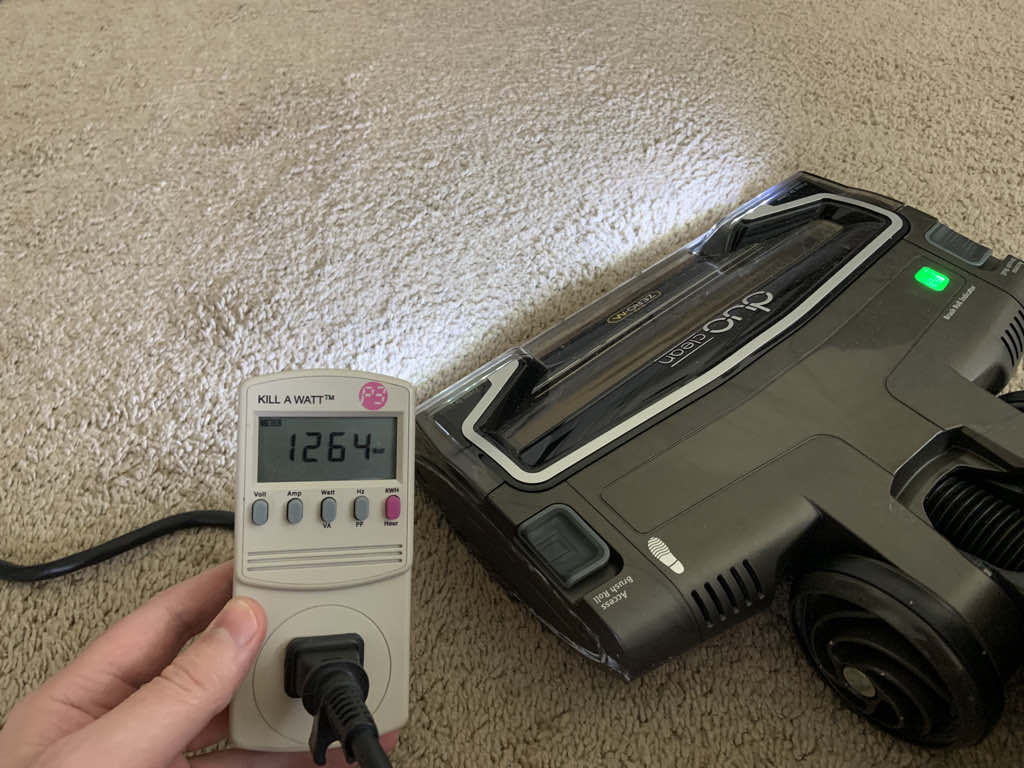Before writing this, the typical example I’ve found was that a Roomba takes 3 hours to charge and uses 30 watts when charging. At 10 cents a kilowatt, that would be $0.13 a month in energy cost.
I wanted to test this myself and found that these numbers are off and don’t factor in idle energy cost.
So I left my Roomba 690 to drain for a month to make the battery completely flat and hooked up a watt-meter, and measured how long it took.
Here is everything I gathered from this test to see how much electricity a Roomba uses.
The Results
I found the Roomba robot vacuum took 1 hour and 40 minutes to charge.
At most, it used 25 watts of power when charging.
When the battery was fully charged, the base station still pulled a constant 1.2 watts of power.
If we round up to 2 hours to charge, you will use 76.4 watts a day if you run your robot vacuum every day. (1.2 idle watts * 22 hours = 26.4 watts) plus (25 watts * 2 hours to charge) = 76.4 watts a day.
If you run your robot vacuum every day at 12 cents a kilowatt:
- 2 hours to charge @ 25 watts = $0.006
- 22 hours idle @ 1.2 watts = $0.0032
$0.006 + $0.0032 = $0.0092 a day
$0.0092 * 30 days = $0.28 a month
It would cost you $0.28 per month if you used your robot vacuum every day.
Once A Week Costs
If you run your robot vacuum once a week
- 2 hours to charge = $0.006 On a working day
- 22 hours idle = $0.0032 On a working day
- 24 hours of idle = $0.0035 On non-working day
Non-working day times 6 days = (6 days * $0.0035) = $0.021
Plus all days totals: $0.006 + $0.0032 + $0.021= $0.03 a week.
$0.03 * 4 weeks = $0.12 a month.
Compared to the $0.28 if you use your robot vacuum every day, you could save $0.16 a month if you only run the robot vacuum once a week.
If you ask me, running your Roomba vacuum every day vs. every week is worth the $0.16 extra a month in electricity cost, especially if you have pet hair or allergy problems.
Power Usage
As we can see, Roombas do not cost that much to run especially every day.
Seeing the Roomba use 1.2 watts at idle doing nothing can be a little worrying but when you put it into perspective it’s not so bad.
When I tested my 40″ TV, I found it pulls 93 watts at idle with it turned on.
I could power 77.5 Roombas at idle with the same amount of power my TV uses while on and at idle.
Don’t Unplug When Done
The type of batteries used in a lot of robot vacuums need to be kept topped up and will die off when not in use so it’s best to keep them plugged in.
To give you an example, when I disconnect my Roomba for 24 hours, it takes around 30 minutes to recharge and get back to normal.
You can put your Roomba charger on a smart home plug (Amazon Link Ad) that turns it on and off but make sure to power the Roomba on an hour before it is set to turn on to clean so it can charge. Though the pennies you’ll save might not be worth this effort.
Roomba Vs. Regular Vacuum Cleaner Power Consumption
Comparing the robot vacuum to your regular vacuum cleaner will be tricky. The Roomba will run for 2 hours while cleaning, but you probably can vacuum faster than that.
On the other hand, a regular vacuum cleaner will consume a lot more power.
The internet says the average home vacuum cleaner uses 1,600 watts. However, when I test my most used vacuum cleaner, it pulls only 1,264 watts.
The Roomba takes about 2 hours to clean, but with the regular vacuum cleaner, I can be done in 15 minutes. This means it costs $0.038 to vacuum with my regular vacuum cleaner.
If I vacuumed every day, that would cost $1.14 a month in energy costs.
Once a week, the regular vacuum would cost ($0.038 * 4 = $0.152 a month).
If you vacuum once a week with your regular vacuum cleaner, it will be cheaper than running a robot vacuum every day. But if you need to run a vacuum every day, you’ll be better off using a robot vacuum as it’s not only cheaper, but you don’t have to do the chore.
If you have pets or allergies, running a vacuum cleaner every day is a must so getting a robot vacuum makes sense.
If It’s Cheaper to Run a Regular Vacuum Cleaner, Why Would Anyone Buy a Robot Vacuum Cleaner?
Yes, it cost more to run a robot vacuum every day compared to only vacuuming with your regular vacuum cleaner once a week.
But what is different is that you’re not doing the chore if you use a robot vacuum.
Vacuuming every day for 15 minutes is not worth the cost when a robot vacuum will do it for you.
With a robot vacuum…
- It cleans on a schedule.
- Runs when you’re away or doing something else.
- Doesn’t require you to get it out of the closet or put it away when you’re done.
- Cleans spaces your regular vacuum cleaner can’t reach.
For some households running the robot vacuum daily is a must with the pet hair and other dirt your floor attracts. So the few extra pennies are worth it but there is more to it…
Not A Replacement
It’s not a robot vacuum vs. a regular vacuum cleaner debate, as you should be using both.
The robot vacuum is the everyday cleaning and hard-to-reach area. The regular vacuum is the deeper cleaning that you need to do once a week.
Keep In Mind, I Use An Older Roomba
I need to make a note that I use the Roomba 690, which is a “dumb” robot vacuum.
My robot vacuum bumps into things randomly, and that is how it navigates the home.
Nowadays, you have robot vacuums that can see the entire room and map it out for best performance. This means it ends up using less power as it cleans smarter and more accurately.
So if you want to maximize power consumption and cleaning ability, check out a modern robot vacuum like the iRobot Roomba i3 (Amazon Link Ad).
